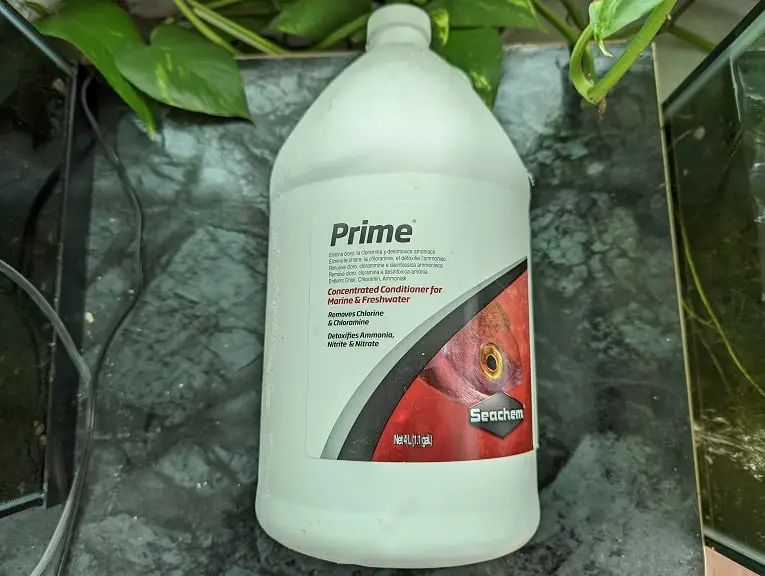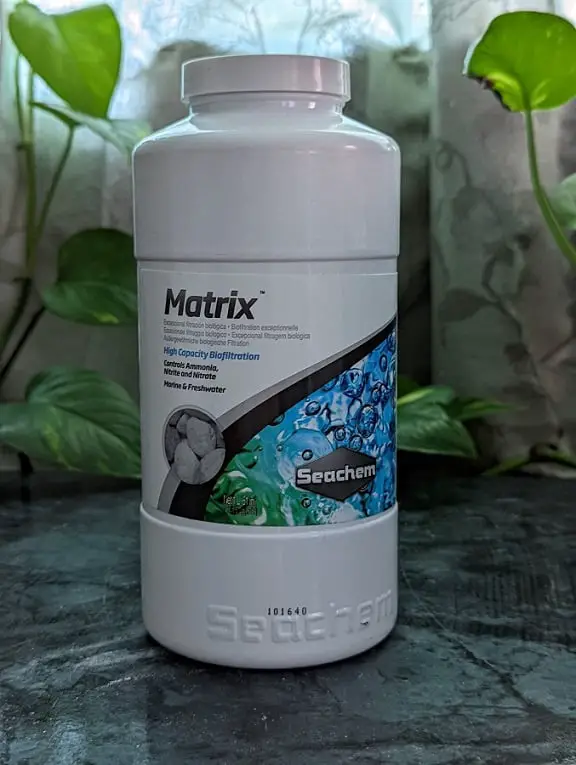Seachem’s Aquavitro Seed Aquarium Treatment can be used to quickly fishless cycle a new tank. To find out how to do so, you can take a look at this tutorial from Aquarium Blueprints.
Recommended Products
In addition to Aquavitro Seed, we recommend that you also acquire the following products to cycle your fish tank:
Seachem Prime – This water conditioner will remove chlorine and chloramine from your tap water. Otherwise, these chemical compounds may end up stalling or crashing the tank cycle as both are harmful to the beneficial bacteria colonies you need to grow in order to establish your biological filtration.

Seachem Matrix – Aquavitro Seed comes with nitrate-consuming bacteria. For these colonies to thrive in your fish tank, you will need to provide surface areas that are devoid of oxygen. The easiest way to create a suitable environment is to use a filter media called Seachem Matrix.

API Water Test Kit – In order to know whether or not you are making progress when it comes to cycling your aquarium, you will need to test your tank waters. Therefore, we recommend picking up the API Water Test Kit as you can use it to test for ammonia, nitrites and nitrates for hundreds of times.
You can purchase any of the aforementioned products on Amazon via the following links:
- Seachem Prime(#CommissionsEarned)
- Seachem Matrix(#CommissionsEarned)
- API Water Test Kit(#CommissionsEarned)
Last but not least, make sure you have some fish food as you will need it to create an ammonia source in order to kickstart the cycling process and keep it running. We recommend using flakes as these dissolves a lot faster when compared to pellets and other solid foods.
How to fishless cycle with Aquavitro Seed
In order to fishless cycle with Aquavitro Seed, you can take the following steps:
1. Set up your fish tank, if you haven’t done so already.
If you are planning to use an UV and/or ozone equipment, then we recommend that you leave both turn off until the cycling process is completed.
2. Fill your tank with water.
If you are using tap water to fill your tank, make sure you dose Seachem Prime to remove chlorine and chloramine. For Prime, you should add 5 mL for every 50 gallons or 200 liters of tank water.
3. If you have a heater, then we recommend setting it to a range of 80°F to 87°F (or 27°C to 30°C). By doing so, the beneficial bacteria colonies should be able to grow at a faster rate.
After the tank cycle has completed, you can lower adjust the heater to a range that is most comfortable for the fish species you are planning to keep.
4. You should then add a small pinch of fish food. The fish food will eventually break down and release ammonia, which is needed to feed the beneficial bacteria.
5. You can then add the first dose of Aquavitro Seed.
For the first dosage, shake the bottle well and then add 5 mL per every 10 gallons or 40 liters of tank water.
6. Around 24 hours after the first dosage of Aquavitro Seed, you need to add another small pinch of food as well as another round of Seed.
For the subsequent dosages, you should add 2.5 mL per every 10 gallons or 40 liters of tank water.
7. Repeat Step #6 daily over the next 5 days.
8. After 1 week has passed since you first started fishless cycling your tank, you can use a testing kit to measure the ammonia, nitrite and nitrate levels in your aquarium waters.
The tank is considered to be fully cycled if you achieve the following parameters:
- 0 ppm of Ammonia
- 0 ppm of Nitrites
- Less than 40 ppm or Nitrates (or less than 20 ppm of Nitrites if you are planning to keep more fragile fish species)
If you have more than 0 ppm of ammonia and/or nitrites, then you need to repeat step #6 until you get the desired results.
For nitrates, you can do a water change to lower its concentration to a safer level.
9. Once your tank water shows that you have zero traces of ammonia and nitrites, as well as a safe concentration of nitrates, you can start adding fish to your tank.
As an extra precaution, we recommend adding 2.5 mL of Seed per every 10 gallons or 40 liters of tank water any time you add new fish to your aquarium.
To find out whether or not you can over dose your tank with Seed, you can take a look at this article.
